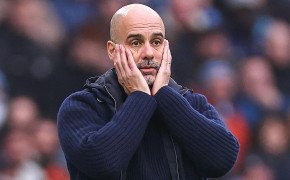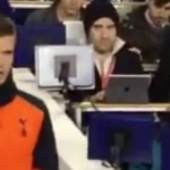For the last 12 minutes of Argentina’s 1-1 draw at home to Venezuela last Tuesday, Daniel Mollo of Buenos Aires’ Radio Cooperativa gave up on commentating the game. Apart from a Venezuela free-kick on the edge of the area he made no reference to what was happening on the field, instead pouring out a sequence of lamentations about the current Argentina team and remembering great names of the past.
With Argentina still desperately struggling to guarantee their place in Russia, he called on the side to ask for forgiveness for the heartache they are giving the public. Some, of course, would say that one man in particular should be doing the begging, but the facts do not bear this out.
Lionel Messi has played in precisely half of his country’s fraught World Cup qualification campaign. In the eight games in which he has appeared, Argentina have accumulated 17 points. In the eight he has missed, they have added just seven. Far from being the problem, Messi is the solution.
In an age when football is marketed through its big stars, a concentration on individuals - for better or worse - is inevitable. Messi, it is said, has never done it for Argentina. How then, one might reply, is he his country’s all time top goalscorer? True, he has never won anything, but he has come very close. If Argentina reached three finals in consecutive years (World Cup 2014, Copa America 2015, Copa Centenario 2016) then no-one did more than him to get them there, with some extraordinary displays along the way.
Alas, he has been unable to impose himself on those three finals. But history would look different had Gonzalo Higuain taken his chances. The career of Diego Maradona might not be looked at it in the same light had Jorge Burruchaga missed the shot that won the 1986 World Cup. The Germans, who had hit back to draw 2-2, might have gone on to win the game. But would it have made Maradona any less of a player?
Football cannot be reduced to a sequence of individual jousts. The collective context is all important – and it is here that Argentina are falling down. It is some time since they have managed to field a coherent, reliable, collective team – and the reasons for that have little to do with Messi.
Between 1995 and 2007, Argentina won the Under-20 World Cup on five separate occasions. More important than any titles was the conveyor belt of talent that was produced for the senior side, Messi included. After winning the 2008 Olympic gold medal, with Messi on board, coach Sergio Batista issued a warning. The quality of youth development in Argentina was sinking fast, he said. How he has been proved right.
Ever since then, Argentina have been a non-event at Under-20 level, either failing to qualify for the World Cup or failing to make an impression when they have got there. The conveyor belt has slowed down, especially in certain key positions. One of Argentina’s key problems in recent times – which cost them the draw against Venezuela – is their creaking centre-backs. It is years since they have been able to field a genuinely top-class player in that position.
Perhaps the last time Argentina had a truly convincing side was at the 2006 World Cup and the following year’s Copa America, when Roberto Ayala was still playing. Subsequently they have always looked unbalanced or vulnerable, hostages to the individual brilliance of their many talented attackers, which, combined with the grit and quality of Javier Mascherano, has taken them far but never far enough.
They nearly failed to make it to the 2010 World Cup. Maradona came in as coach to drag them over the line with a defensive line-up, and then got carried away and went too far in the other direction in South Africa. Thereafter a sequence of coaches – Sergio Batista, Alejandro Sabella, Gerardo Martino and Edgardo Bauza - all flirted with the idea of recreating a Barcelona-style 4-3-3, but all ran into the same problems. The midfield could not press like Barca and the slow defensive line dropped much deeper – the team could therefore not exert the same control and Messi was forced to cover a huge area, retreating into his own half to pick up possession, draining his energy for decisive contributions in the final third.
Now the fascinating Jorge Sampaoli has come in to try and rescue the campaign and replicate the success he had with Chile. But the circumstances are different, as Sampaoli would acknowledge. With Chile he accepted that the hard work had been done by one of his predecessors, Marcelo Bielsa. The model of play had been implanted – high intensity, pressing in the opponents’ half of the field, throwing men forward and looking to create two-against-one situations down the flanks. Working with the same players, Sampaoli was able to refine a pre-established identity.
With Argentina it is different. The changes in tactics and personnel have been considerable. There is next to no time to work on the training ground. And it is a method of play which carries risks – especially of offering the counter-attack to the opponents. It is here, with their slow back three, that Argentina predictably came undone against Venezuela.
True, Messi did not have his best game. But he had done some extraordinary things a few days earlier against Uruguay, and no-one is ever outstanding in every match. As it was, Messi carved out a clear opportunity for substitute Javier Pastore at the end of the game – but if Daniel Mollo was not paying attention, then Wuilker Farinez, Venezuela’s superb young goalkeeper, certainly was. He came quickly off his line to block the shot and ensure a draw for his side.
Next month’s meeting with Peru has now become a must-win. Any other result and Argentina will go into the final round either fifth in the table - the play-off spot - or sixth, outside the qualification places. And that last round is away to Ecuador, at the altitude of Quito – not a venue where unacclimatised visitors relish chasing a result.















